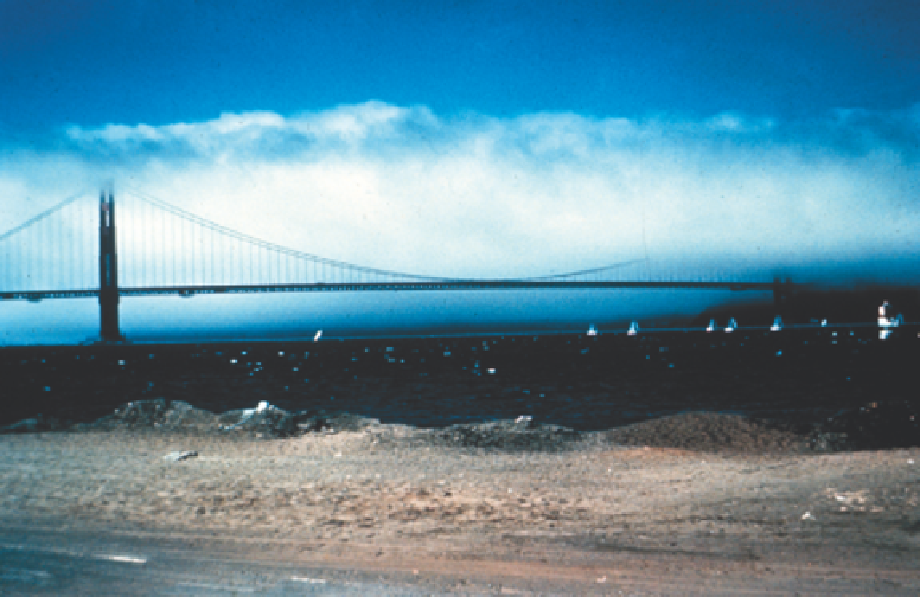Geoscience Reference
In-Depth Information
Plate 11.4
A fog bank enveloping the Golden Gate Bridge, San Francisco. NOAA wea00154
large-scale pressure changes cause a cessation of
the diurnal sea breeze or when modified air from
the South Atlantic or South Indian Ocean is able
to cross the continents at a time when the normal
dynamic stability of the Trade Winds is disturbed.
In southwest Africa, the inversion is most likely to
break down during either October or April,
allowing convectional storms to form, and
Swakopmund recorded 51mm of rain on a single
day in 1934. Under normal conditions, however,
the occurrence of precipitation is mainly limited
to the higher seaward mountain slopes. Further
north, tropical west coast locations in Angola and
Gabon show that cold upwelling is a more variable
phenomenon in both space and time; coastal
rainfall varies strikingly with changing sea surface
temperatures (
Figure 11.55
). In South America,
from Colombia to northern Peru, the diurnal tide
of cold air rolls inland for some 60km, rising up
the seaward slopes of the Western Cordillera and
overflowing into the longitudinal Andean valleys
like water over a weir (
Figure 11.56
). On the west-
facing slopes of the Andes of Colombia, air
ascending or banked up against the mountains
may under suitable conditions trigger off convec-
tional instability in the overlying trades and
produce thunderstorms. In southwest Africa,
however, the 'tide' flows inland for some 130km
and rises up the 1800m Namib Escarpment
without producing much rain because convec-
tional instability is not generated and the adiabatic
cooling of the air is more than offset by radiational
heating from the warm ground.
2 Topographic effects
Relief and surface configuration have a marked
effect on rainfall amounts in tropical regions,


